What types of flowers suit Washington? It’s a state with several USDA growing zones, so planting up the yard requires forethought to avoid costly expenses. This article helps guide your choice by suggesting twelve flowers for a vibrant bloom. Discover the best flowers to plant in Washington, plus how to care for them.
Washington’s Hardiness Growing Zones
Washington’s growing zones are 4 to 9a, but chiefly split between 6 and 8b, with the west coast staying warmer than central and eastern Washington.
What does this mean for plants? They’ll have an earlier start and flower later in the season in the west. Plus, some plants that thrive on Washington’s coast may not be hardy enough to cope with colder areas.
Here’s a list of the best flowers to plant in Washington with their USDA hardiness zones rating. It’s also a good idea to double-check plant labels because a cultivar may be less hardy than a parent plant. Check your Washington growing zone on this map, and you’re good to grow.
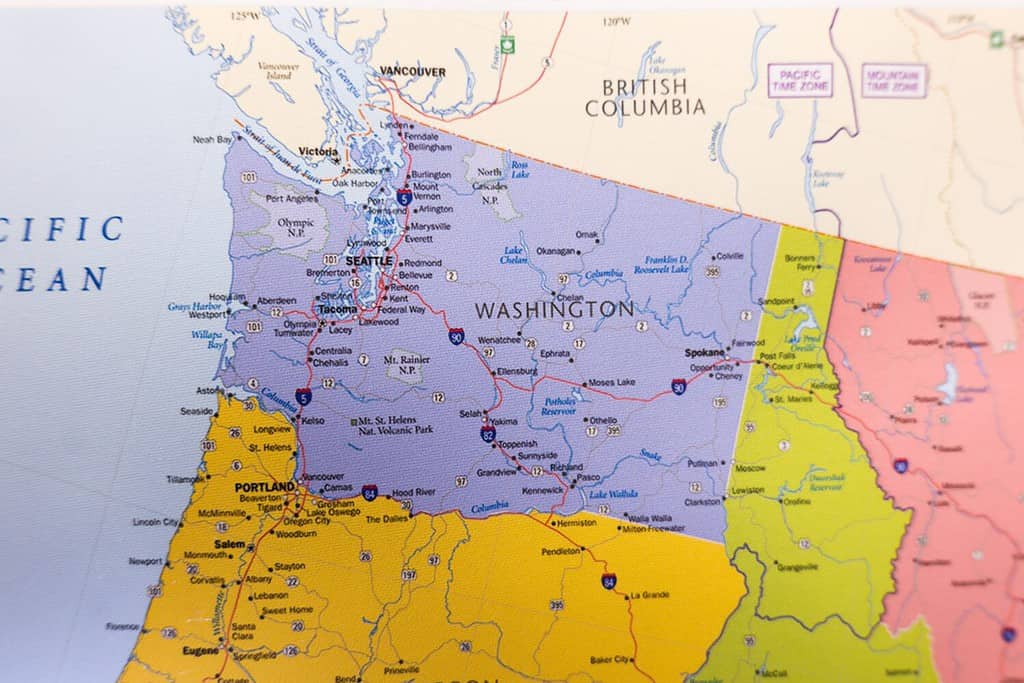
Washington’s USDA hardiness zones range from 4 to 9a.
©Artyom Lezhnyuk/Shutterstock.com
1. Western Mountain Heather
Often dubbed white mountain heather, this is a native subalpine plant from western America. It’s an evergreen small branching shrub with scaly leaves and beautiful bell-shaped white flowers that are held in place by red sepals. It’s an excellent choice for rockeries and containers because it tops out at 12 inches tall.
Plant western mountain heather in cool, damp, gritty soil with full sun, and it’ll flower across Washington from June to September with no attention required. Small pollinators love its teeny bell flowers, so it’s a great choice for pollinator-friendly eco-gardens. It’s small but mighty and one of Washington’s best flowers to plant.
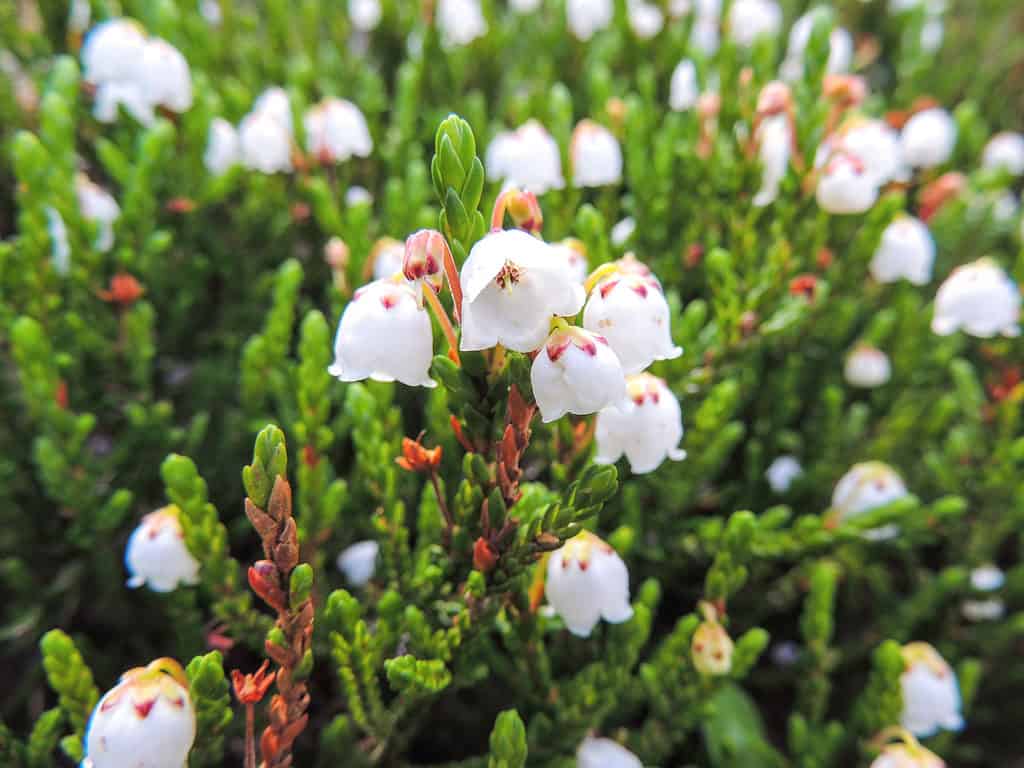
Western mountain heather is chiefly known as white mountain heather.
©iStock.com/Jeremy Christensen
2. Great Camas
Great camas are native to western North America. It’s a late flowering spring bulb with star-shaped blue flowers atop a 24-48 inch spike. Its spike grows through a mass of long, narrow leaves. Its blue flowers are especially attractive to pollinators like bees, and experts say it’s because bees see blue shades more easily. Alongside bees, great camas attract jeweled hummingbirds.
Great camas does best in full sun, but it will cope with a little light shade too. Most importantly, it needs consistently moist soil. If it’s left to dry out, its flower spike withers, and it gives up for the year.
This beauty suits USDA growing zones 5-9, so it’s a hit across Washington state.

Bees and butterflies easily spot great camas’s blue flowers.
©Nick Pecker/Shutterstock.com
3. Shasta Daisies
Shasta daisies like well-drained soil and full sun to partial shade. In the right conditions, they’ll reach three feet in height. It’s the simplicity of these daisies that’s so attractive. Their thin white petals set off with a bright yellow center disk are handsome additions to wild borders. Pollinating insects universally love shasta daisies’ easily accessed pollen banks.
Deadhead frequently to encourage new blooms, and they’ll flower from late spring to midsummer. Once established, they’re drought tolerant and grow in USDA zones 4 through 9, so they’re perfect for every Washington state garden.

Shasta daisies grow across Washington state from late spring to late summer.
©iStock.com/ChristySturm
4. Garden Phlox
Highly fragrant garden phlox produces a colorful show in USDA growing zones 4 to 8. In warmer zones, they can bloom in late spring, but cooler regions may have to wait until mid-summer. However, it’s worth the wait. Phlox bloom small magenta, pink, rose, red, white, and bicolor flowers that release a glorious sweet scent that’s especially strong at night to attract pollinating moths.
Showy phlox reach two to four feet tall depending on the cultivar. Wait until the frosts have passed, then plant them in full sun with moist, fertile soil that’s bulked up with well-rotted organic matter. Regular deadheading encourages new flowers and keeps pollinators happy.

Colorful phlox releases it’s scent in the evening to attract moth pollinators.
©iStock.com/Lurida
5. Blanket Flower
Blanket flowers are one of Washington’s longest-blooming flowers if they receive plenty of sun and moisture. This vivid flower is a perennial, so it starts to re-shoot after winter’s frosts have passed and spring sunshine has warmed the soil up. Traditionally, blanket flowers bloom red and yellow in mid-summer, but fancy new cultivars offer orange and rust shades too.
These fragrant flowers grow two feet tall and survive USDA growing zones 3-9, so they’re well suited to all of Washington. Once established, they cope well with drought; because they’re bred from wildflowers, pollinators adore them.

Blanket flowers are one of the longest blooming flowers across Washington.
©Donna Milner/Shutterstock.com
6. Russian Sage
Graceful skyward stems of rich lilac top Russian sage’s aromatic gray foliage. It’s a lavender look-alike but with a totally different herbal scent. This perennial loves full sun and fairly average ground. It copes well with chalk, sand, and rockery soil so long as it’s well-drained. Russian sage does not like consistently wet roots.
Hardy from zone 4 to 9 it’s a great choice for all of Washington. Its foliage is evergreen in warmer zones, but it may die down to nothing in cooler areas before re-emerging in early spring. In cool zones, its flowers bloom in late spring.
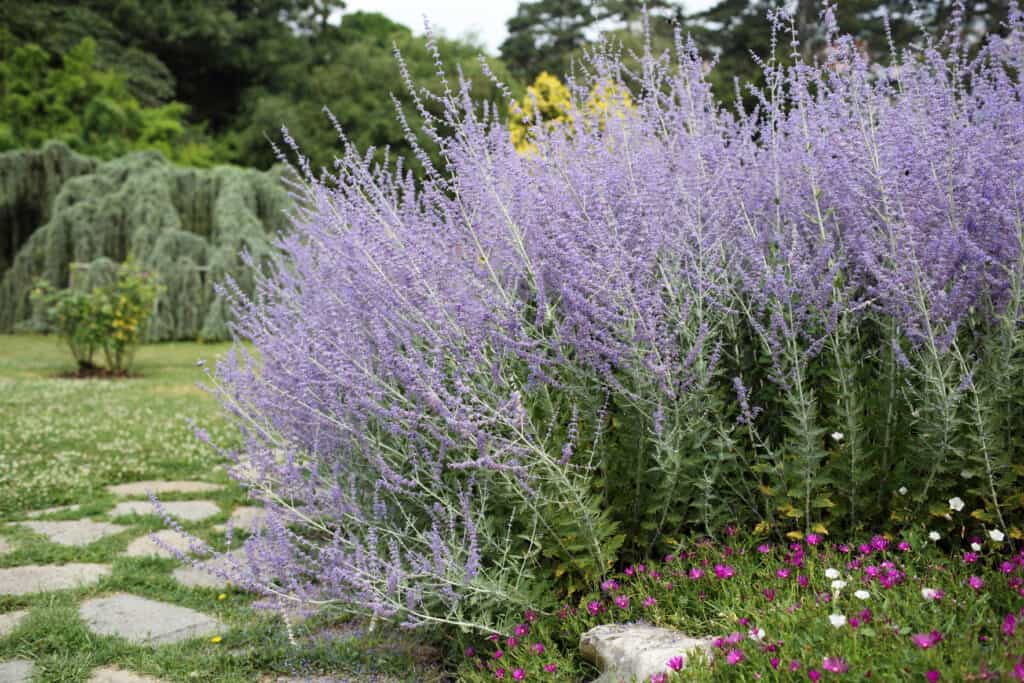
Russian sage’s herbal fragrance and easy-to-find blue flowers are irresistible to bees.
©iStock.com/loflo69
7. Tulips
Tulips grow from bulbs in zones 4-9 and enjoy a winter’s soaking before blooming in late April.
In Washington, it’s best to plant tulips during fall. Long pale green leaves emerge in early spring, followed by a stalk that’s topped with a stunning silky petalled flower in any color, shape, and frill you please.
Tulips need well-drained soil so the bulb doesn’t rot. A free-draining border or container is perfect; just choose a sheltered spot in full sun so strong winds don’t blast the petals off too early.
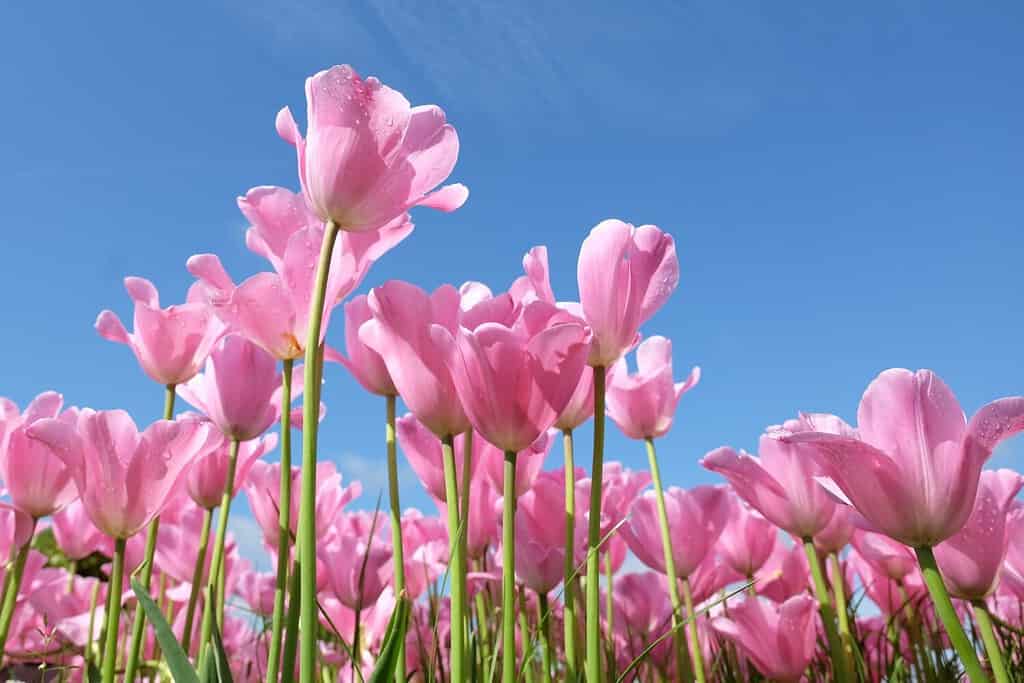
Plant tulip bulbs in late fall for a stunning flower show in early spring.
©Alex Manders/Shutterstock.com
8. Zinnia
Soldier-like annual zinnias line a border or path to perfection. Their stiff stems reach a foot in height, and each stem is topped with just one flower, but what a display they create planted in a swathe! Zinnias bloom in vivid yellow, pink, purple, and reds that set a border on fire with color.
Plant zinnias out after the frosts have passed in early May into well-drained, fertile soil. Choose a sunny spot because zinnias hail from tropical climates, and they love sunshine. With plenty of sun and water during dry spells, zinnias flower in Washington until the frost re-appears.
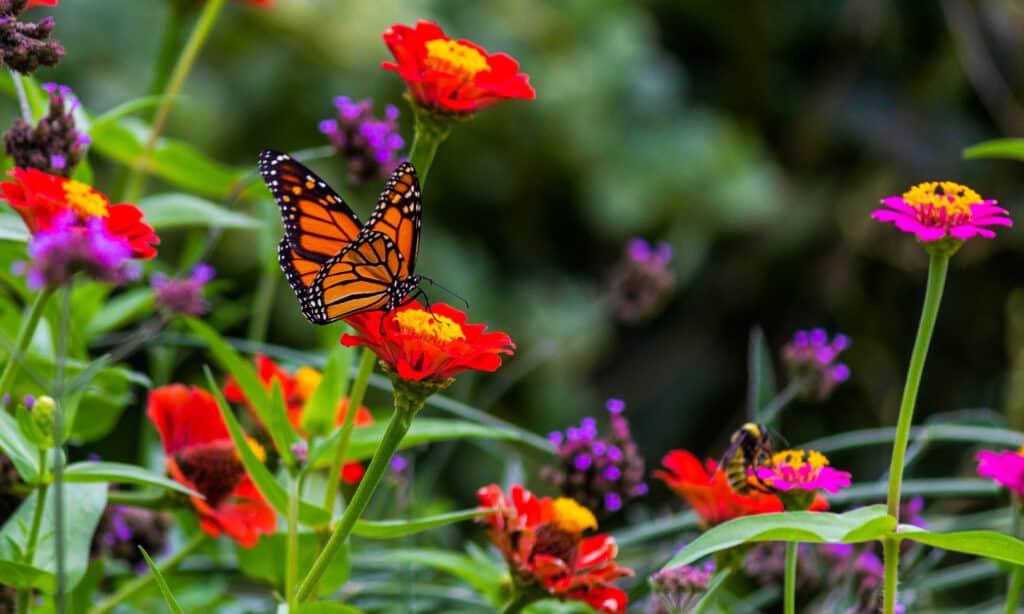
Zinnias need full sun and well drained soil to bloom at their best.
©Kate Scott/Shutterstock.com
9. Bleeding Heart
Cool Washington yards benefit from bleeding hearts, botanically known as Dicentra formosa. This perennial loves shade and moist soil. It’s a forest edge plant that throws up blue-green fern-like foliage and a stem decorated with a row of heart-shaped flowers. Choose red, pink, or white shades and watch the early pollinators line up for lunch.
Bleeding hearts emerge after the frosts have finished, so the blooms fill yards from early April until fall. They thrive in zones 4-10 as long as they’re kept moist and cool.
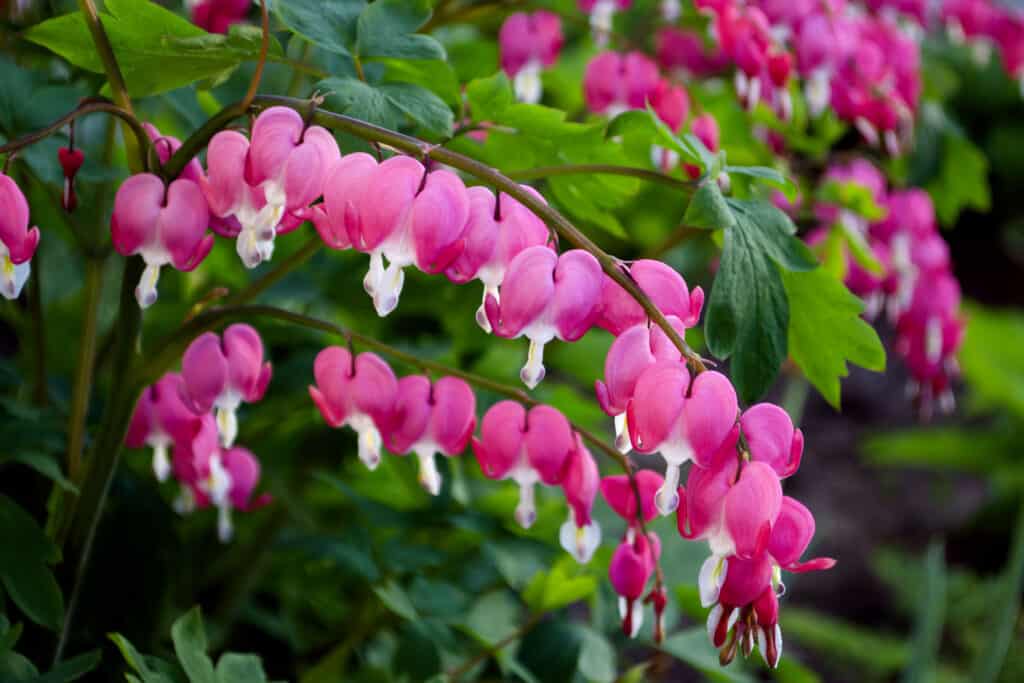
Bleeding heart plants need moist soil and cool shade.
©iStock.com/Oksana Akhtanina
10. Dahlia
Tropical native dahlias grow in zones 4-10 during summer. They love the hot sun, but they’re not suited to soggy wet soil, so in Washington’s cool zones, you’ll need to dig them up for winter and replant the tubers in early spring once the frosts have finished.
These glorious flowers bloom in shades of white, yellow, pink, red, orange, and purple. They need fertile, well-drained soil and regular water so they don’t dry out. Many cultivars reach several feet tall, so they suit the mid-border or well-watered containers. If you’re a fan of cut flowers, this is the plant for you. The more you cut their heads, the more they produce, and the blooms last for weeks in a vase.

Dig up dahlia tubers in fall or winter weather will rot them.
©iStock.com/AndreaObzerova
11. Black Eyed Susan
Cottage-garden favorite black-eyed susan packs a punch of color in Washington’s yards with big yellow petals and jet-black centers. Like mini sunflowers, they brighten up a space with real panache, and the good news is they’re hardy in Washington from zones 4-9.
Sun-loving, black-eyed susans need a sun-drenched spot where they’re pretty drought hardy. It’s safe to plant them outside from late April onwards, and in ideal conditions, they’ll flower from early June through to the early frosts. Pollinators love black-eyed susan, so expect lots of bees and butterflies in the yard. They’re one of the best flowers to plant in Washington for pollinators.
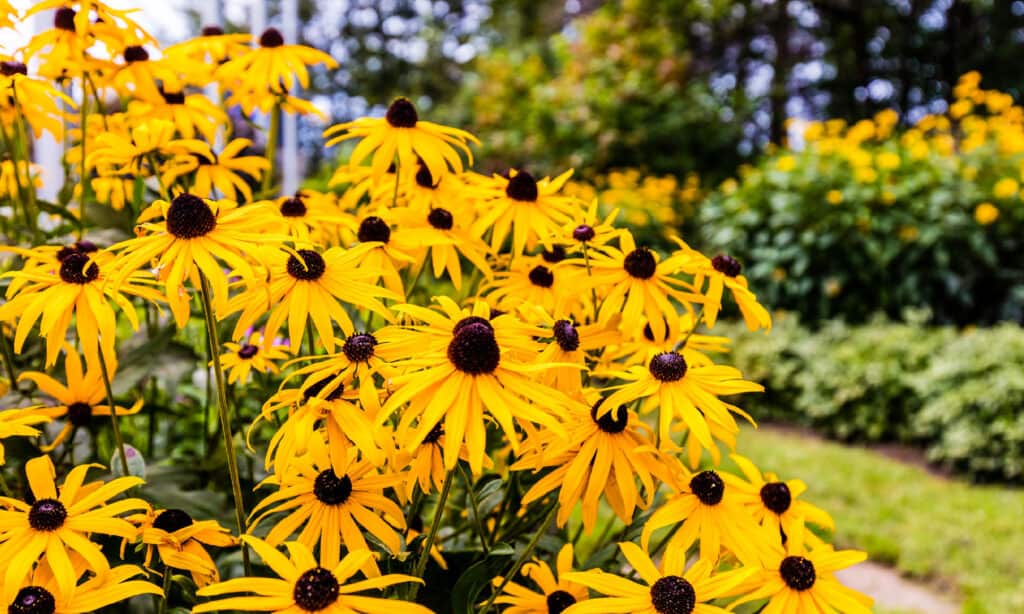
Perennial black-eyed susan is a drought tolerant pollinator magnet.
©iStock.com/Dopeyden
12. Broadleaf Lupine
Native broadleaf lupine is a drought-tolerant evergreen perennial that’s suited to Washington’s zone 6-10 gardens. Its silvery leaves and spires of blue pea-style flowers bloom in spring until mid-summer.
Perennial broadleaf lupines reach three feet tall, so they suit the back of a border. Full sun and well-drained, preferably acidic soil are essential to make the most of this native flower’s bloom time.
If your soil isn’t suitable, add a thick layer of acidic mulch, such as pine mulch or ericaceous compost, which makes the ground more acidic. Top it up each year, and your lupines will glow from April through summer.
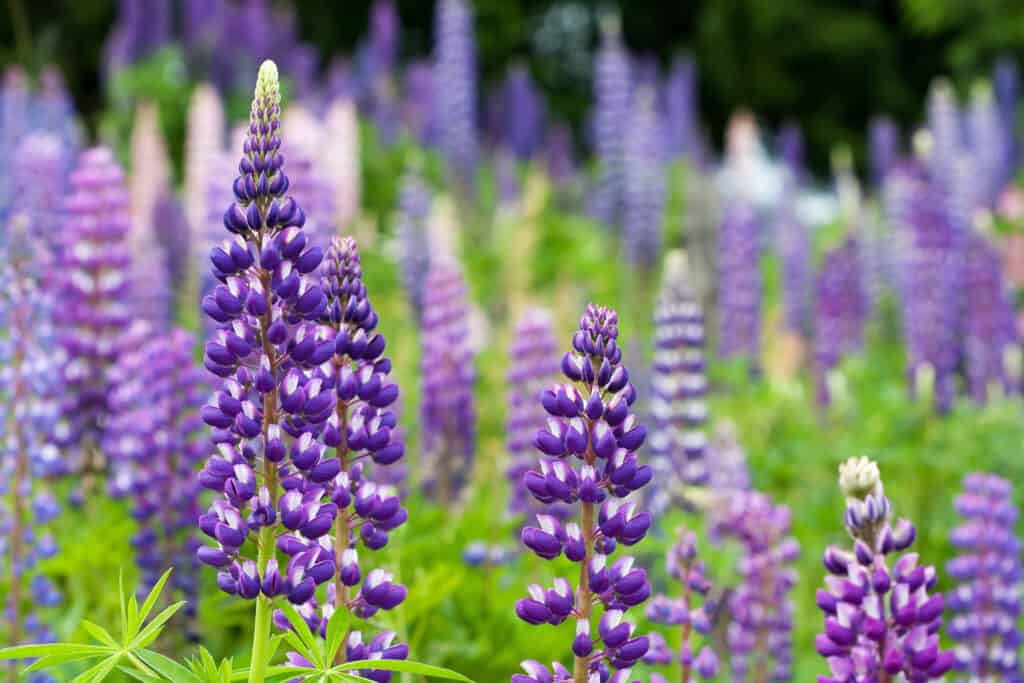
Lupines prefer slightly acidic soil so apply bracken or pine mulch to borders.
©iStock.com/yuelan
The photo featured at the top of this post is © Alexander Lukatskiy/Shutterstock.com
Thank you for reading! Have some feedback for us? Contact the AZ Animals editorial team.







